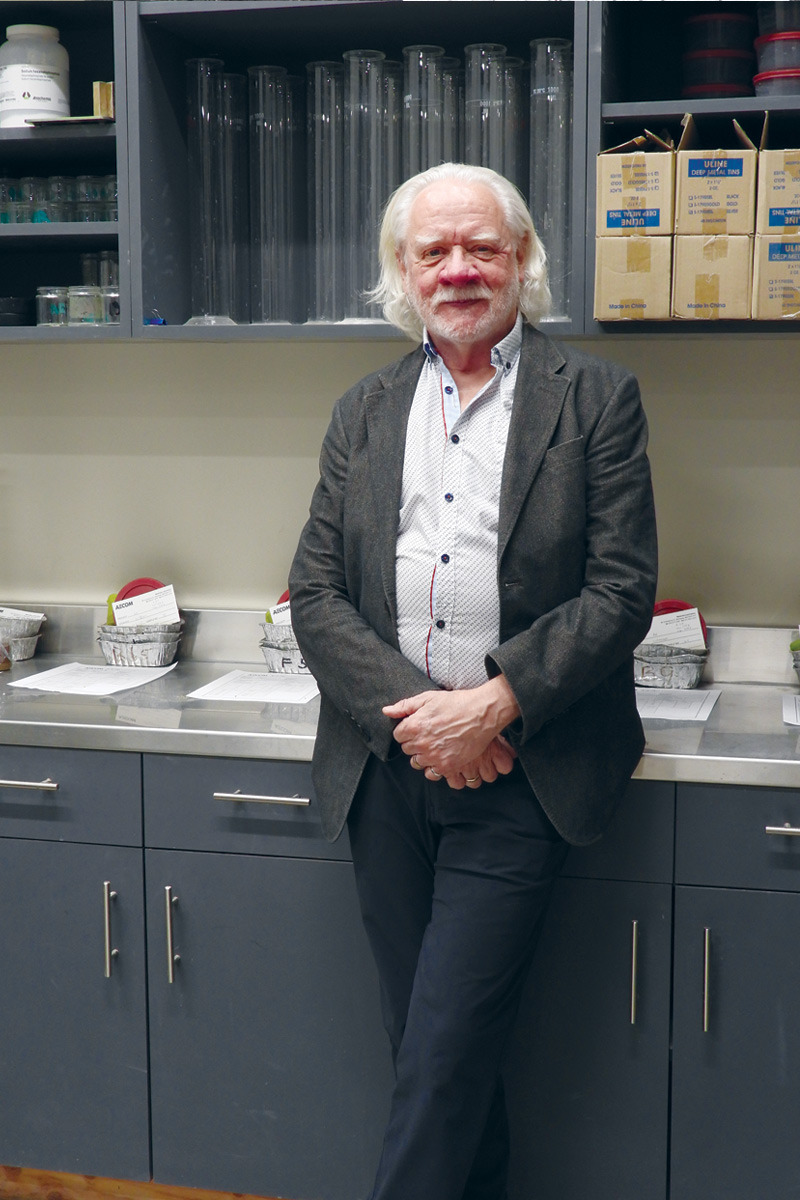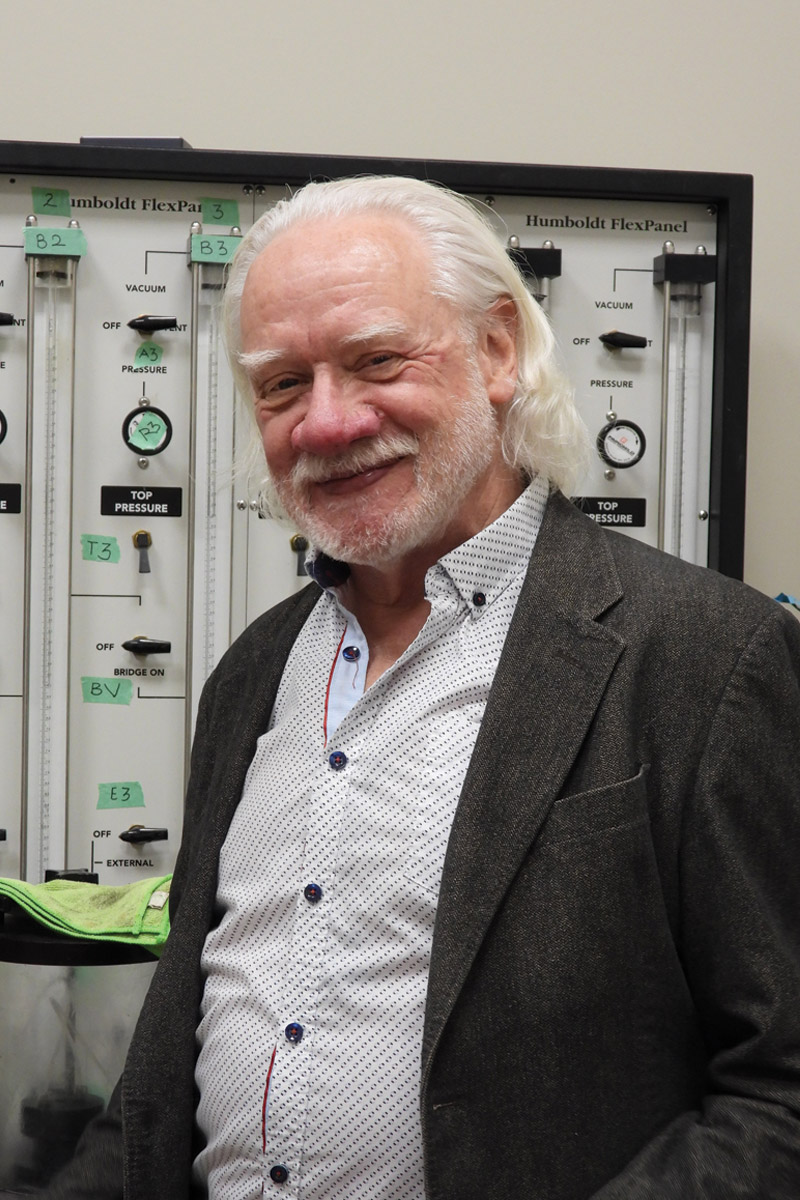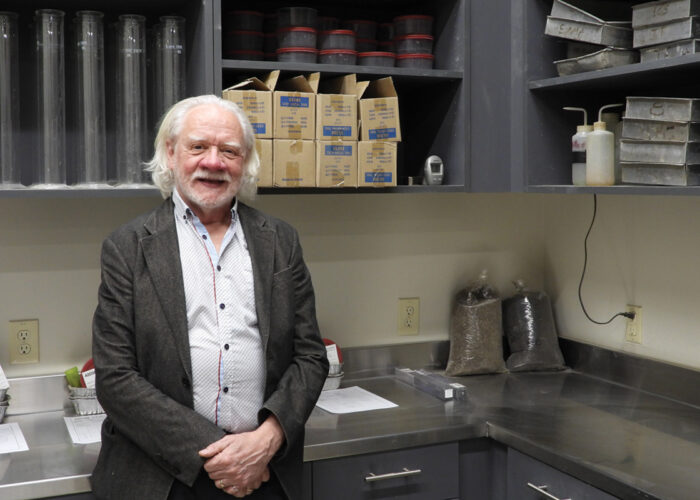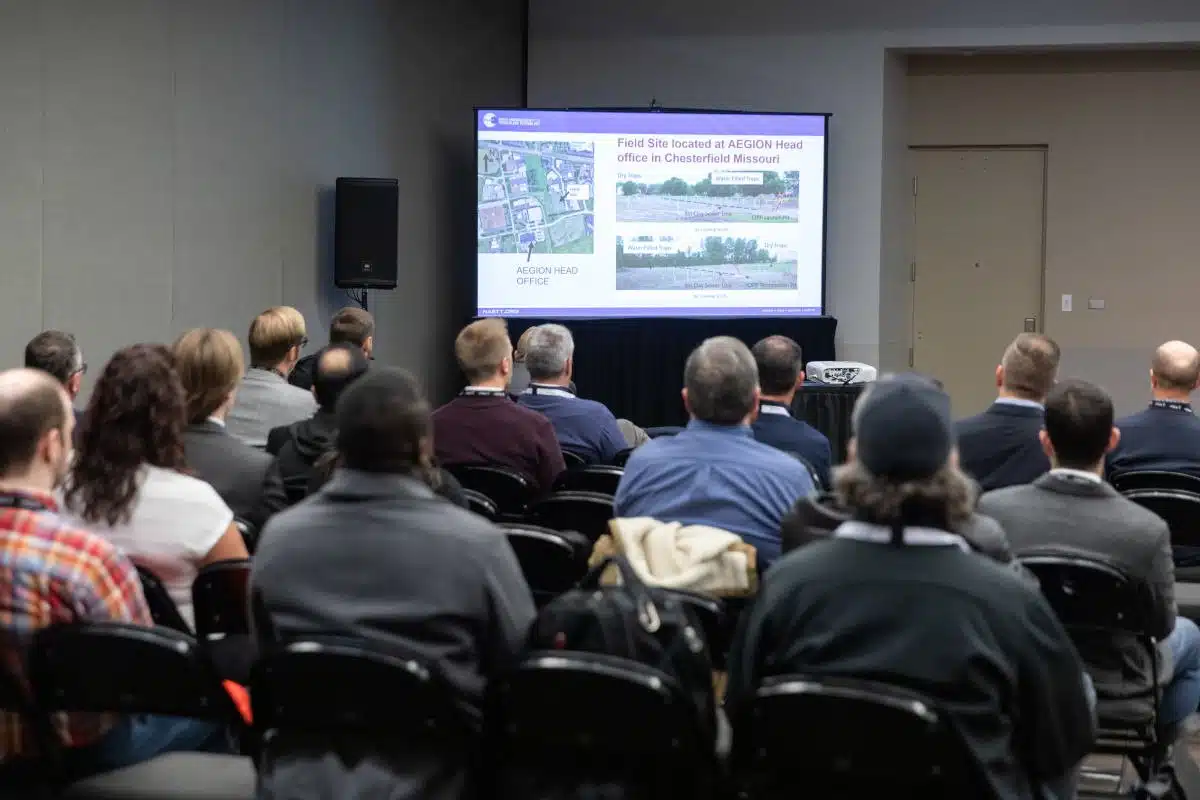
2025 Trenchless Technology Person on the Year – Chris Macey, P.Eng.

For nearly 50 years, Chris Macey has been synonymous with trenchless engineering.
He’s a respected and beloved industry giant whose passion for making our underground infrastructure systems better, stronger and, hopefully, ageless is unmatched.
His irreverent personality makes him easy to approach and talk with. He is blunt, smart and funny. He’s an extraordinary storyteller and invaluable trenchless advocate and leader.
Macey’s enthusiasm for trenchless technology is rooted in his lifelong passion for problem-solving and innovation — the value of thinking outside the box. As trenchless applications and principles have gained acceptance over the decades, Macey has been there to promote, educate and innovate.
He’s a dedicated voice to his peers and the next generation of trenchless technologists. Making a difference — whether in the classroom or to a city’s underground infrastructure — is something Macey strives for each day.
“If it doesn’t motivate you that the difference a trenchless rehab program can do for a city vs. destroying a city, if that doesn’t motivate you as an engineer and a human being, then I don’t know what to say,” he says.
As AECOM’s global practice lead for condition assessment and rehabilitation, Macey, 69, has applied his expertise across Canada, the United States and globally, enhancing and advancing the standards of practice in the trenchless field.
Advancing the Industry
He has been previously recognized by Trenchless Technology magazine as a Trenchless Pioneer, as well as inducted into the NASTT Hall of Fame and chosen by the Utility Engineering & Surveying Certification Board of ASCE as one of the inaugural Board-Certified Pipeline Engineer-Water (BC.PLW).
Macey has been a transformative force in the trenchless technology landscape. His recent contributions include the update to NASTT’s CIPP Good Practice course, an active trainer for NASSCO and NASTT, as well as involvement with 13 different AWWA committees, among others.
His work in the development and education of advanced analytics and artificial intelligence for pipeline condition assessment have been revolutionary. Macey’s commitment to developing and sharing CIPP construction and quality standards include his role in developing one of the first utility-owned CIPP construction standards.
A prolific author, Macey has contributed more than 300 papers, presentations, articles, manuals and educational seminars since 1985, addressing critical topics from design to construction and include co-authoring the NASTT CIPP Good Practice Guidelines.
His articles are frequently referenced by both trenchless veterans and newcomers, underscoring his status as a leading voice in the industry.
He continues to be an influential voice and a guiding light for the industry he is so passionate about. For all of these attributes and contributions, Chris Macey, P.Eng, is the 2025 Trenchless Technology Person of the Year.

“I’m just so humbled and appreciative,” Macey says. “I know that I can come off as brash and cocky but you do those things as a defense mechanism. This is all very humbling. It’s the respect of your peers and, as an engineer, that’s the best feedback you can get — it means everything.”
Macey’s Family Influence
Macey studied and graduated with his engineering degree from the University of Manitoba in Winnipeg.
He attributes his talent in math and science to guiding him toward an engineering career but emphasizes that his mother, Christine, played the most pivotal role in his success. He credits her influence for shaping his work ethic and drive. She passed away when he was 17, but her life lessons continue to shape who Macey is today.
“My Mom was a really, really smart person,” he says. “If I have brains and thirst for knowledge, it is a direct result of what she imparted to me very early on. I owe her a great deal. She wasn’t around to watch me become an engineer but in the context of learning and work ethic, she taught me ‘If you don’t know something, then figure it out.’ She taught how to make learning interesting.
“Not to take anything away from my dad. I have a great deal of respect for my father, who I got my stubbornness from,” Macey explains. “But my mom taught me how to make learning interesting. When I was a little kid, she taught me how to make coffee for her and breakfast for me by teaching me the science of what I was doing. Not to offload work but to make me smarter and better able to look after myself and that is something that has always stuck with me — an interest of why things are the way they are.”
An Introduction to Trenchless
Macey’s first job out of college was working for the City of Winnipeg and involved trenchless technology, though the term “trenchless” was not known at that time.
The year was 1977 and Macey was tasked with inspecting underground construction for rehabilitation, primarily water and sewer renewals. He threw himself into his job, excelling and enjoying the work, which led to an early mentor Bob Okabe to urge him to join the private sector as a consultant, specializing in this field.

“I ended up working for UMA Engineering, which was later acquired by AECOM. I started working as a consultant and I’ve been working at the same place ever since,” says Macey.
He explains, though, that he owes his professional career to the City of Winnipeg for the simple reason that he fell in love with the practice of trenchless technology during his short tenure there and then they gave him the work opportunities to truly learn the craft as a consultant. “Though the words trenchless technology didn’t exist at the time, the use of it was a way of life in Winnipeg. Trenchless has always been a thing there.
“At the time I started in engineering in the 1970s, even if you built a new subdivision, you did not dig up the street, “he says. “Before the street was even built, you would use horizontal earth boring to put in the house services to minimize disruption. That’s the environment I grew up in.”
His UMA work kept him in Winnipeg, designing rehab and condition assessment programs for the City starting in the 1980s. “We were doing things like horizontal earth boring, pipe extraction, CIPP and pipe bursting before people called it pipe bursting,” Macey says. “Those were all the technologies that were common to the industry without standards.”
Pioneering Work in Winnipeg
The City of Winnipeg was also a trenchless pioneer, developing its modern sewer rehabilitation program in 1996 — and Macey is proud to be part of the program’s development and success.
“In 1996, we went from doing a CIPP job every second year as a trial to putting out a complete program,” Macey says. “We started a condition assessment program and the amount of CIPP pipe we did went from less than 10 percent of the capital program to more than 85 percent of it in one year. Using condition assessment radically changed the way that we did rehab here because you can’t do trenchless work without it.”
Macey has marveled from his front row seat of watching the trenchless industry grow in acceptance and expand into more and more areas around the globe. While the industry is in a strong place and it’s easy to just tout its strengths, Macey also sees the challenges that lay ahead.
“Trenchless is easily in a good place and it’s in a great place vs. where it was years ago. But we can’t get overconfident,” he says. “The challenges that are out there for us, at their core, are if we think we have learned it all. If that happens, we’ve grossly underestimated how complex everything is. There is no question that people care about learning these things and that’s a great thing. That there is passion and a demand for dissemination of this knowledge is also a really good thing.”
The Future for Trenchless
What concerns Macey is that in the race to make the industry’s work faster and more time efficient will in actuality make those doing those jobs less knowledgeable in the long run. And artificial intelligence technology is at the heart of what he is concerned about, that technology will eliminate engineers and contractors physically getting their eyes, feet and hands in the pipe vs. finding that fine-line balance of the two.
“That’s one of the challenges going forward, that all of these things that we figure out and invent don’t make us dumber at the end of the day but make us savvier and we don’t lose the knowledge of what we are doing,” Macey says. “I am guilty of this. I’ve developed tools that I know have made people dumber and I feel guilty about that. But I also try to teach people the art of engineering; that while there isn’t a magic fix to everything, there are some really innovative things that we can do.”
So, how does the industry sidestep the possible AI technology landmine? For Macey, it’s staying involved and in person with industry associations and organizations.
Whether writing important industry standards, leading CIPP good practice training sessions or collaborating with other trenchless experts, imparting his wisdom and expertise is critical to Macey.
“You can’t teach effectively unless you know something and, at the core of everything, what I still have a passion for is communicating the true practice of engineering. Being able to pass that on, especially as I get older, is pretty important,” he says. “I am not very good at saying no and it’s hard to manage all of it in conjunction with a day job because it does take a lot of time. But it’s also very satisfying. And AECOM has supported me a great deal through the years.”
Work-Family Balance
Macey self-acknowledges that early in his career he was a workaholic, leaving little time for relaxing and rejuvenating his mind and body. And it took a toll on him physically and mentally — How could it not, acknowledging that down time wasn’t a part of his life. “I was working 20 hours a day like I was a machine,” he says.
Over the years, he’s gradually learned to embrace the work-life balance and enjoys several hobbies outside the office. Golf, cooking and wine top his list of relaxation, particularly because he can enjoy these endeavors with his wife, Chrystal.
However, nothing Macey does is done halfway and, with all three activities, he brings his engineering mind along for the ride, seeking out the science within each.
“As engineers, we are paid to solve problems and solving problems is what relaxes me in life,” he says.
His first wife, Darlene, passed away in 2008, after sharing 34 years together. He met Chrystal in 2009 and the couple were married in 2012. He speaks passionately about Chrystal’s business strength, her independence and intelligence and how well they complement each other. The union also brought Macey stepdaughter, Aurora, who he adores. And now the family awaits the birth of their first grandchild this May.
“I consider myself a very lucky human being, just very, very fortunate,” Macey says. “I stumbled into a career that I love. I didn’t have a grand plan that I fulfilled. I have a good work ethic and am genuinely a big fan of the human race and I think the diversity of my work reflects that. Again, I am a very lucky human being.”
Sharon M. Bueno is editor of Trenchless Technology.




